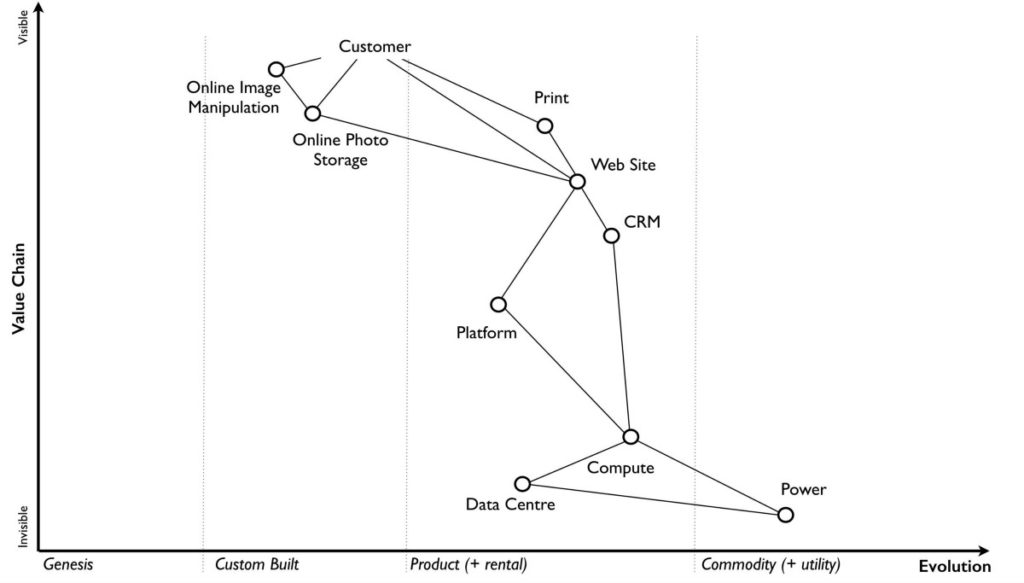Archive for February, 2018
What’s your problem?
 If you don’t have a problem, you’ve got a big problem.
If you don’t have a problem, you’ve got a big problem.
It’s important to know where a problem happens, but also when it happens.
Solutions are 90% defining and the other half is solving.
To solve a problem, you’ve got to understand things as they are.
Before you start solving a new problem, solve the one you have now.
It’s good to solve your problems, but it’s better to solve you customers’ problems.
Opportunities are problems in sheep’s clothing.
There’s nothing worse than solving the wrong problem – all the cost with none of the solution.
When you’re stumped by a problem, make it worse then do the opposite.
With problem definition, error on the side of clarity.
All problems are business problems, unless you care about society’s problems.
Odds are, your problem has been solved by someone else. Your real problem is to find them.
Define your problem as narrowly as possible, but no narrower.
Problems are not a sign of weakness.
Before adding something to solve the problem, try removing something.
If your problem involves more than two things, you have more than one problem.
The problem you think you have is never the problem you actually have.
Problems can be solved before, during or after they happen and the solutions are different.
Start with the biggest problem, otherwise you’re only getting ready to solve the biggest problem.
If you can’t draw a closeup sketch of the problem, you don’t understand it well enough.
If you have an itchy backside and you scratch you head, you still have an itch. And it’s the same with problems.
If innovation is all about problem solving and problem solving is all about problem definition, well, there you have it.
Image credit – peasap
The Leader’s Journey
 If you know what to do, do it. Don’t ask, just do.
If you know what to do, do it. Don’t ask, just do.
If you’re pretty sure what to do, do it. Don’t ask, just do.
If you think you may know what to do, do it. Don’t ask, just do.
If you don’t know what to do, try something small. Then, do more of what works and less of what doesn’t.
If your team doesn’t know what to do unless they ask you, tell them to do what they think is right. And tell them to stop asking you what to do.
If your team won’t act without your consent, tell them to do what they think is right. Then, next time they seek your consent, be unavailable.
If the team knows what to do and they go around you because they know you don’t, praise them for going around you. Then, set up a session where they educate you on what you should know.
If the team knows what to do and they know you don’t, but they don’t go around you because they are too afraid, apologize to them for creating a fear-based culture and ask them to do what they think is right. Then, look inside to figure out how to let go of your insecurities and control issues.
If your team needs your support, support them.
If your team need you to get out of the way, go home early.
If your team needs you to break trail, break it.
If they need to see how it should go, show them.
If they need the rules broken, break them.
If they need the rules followed, follow them.
If they need to use their judgement, create the causes and conditions for them to use their judgement.
If they try something new and it doesn’t go as anticipated, praise them for trying something new.
If they try the same thing a second time and they get the same results and those results are still unanticipated, set up a meeting to figure out why they thought the same experiment would lead to different results.
Try to create the team that excels when you go on vacation.
Better yet, try to create the team that performs extremely well when you’re involved in the work and performs even better when you’re on vacation. Then, because you know you’ve prepared them for the future, happily move on to your next personal development opportunity.
Image credit — Puriri deVry
Mapping the Future with Wardley Maps
 How do you know when it’s time to reinvent your product, service or business model? If you add ten units of energy and you get less in return than last time, it’s time to work in new design space. If improvement in customer goodness (e.g., miles per gallon in a car) has slowed or stopped, it’s time to seek a new fuel source. If recent patent filings are trivial enhancements that can be measured only with a large sample sizes and statistical analysis, the party is over.
How do you know when it’s time to reinvent your product, service or business model? If you add ten units of energy and you get less in return than last time, it’s time to work in new design space. If improvement in customer goodness (e.g., miles per gallon in a car) has slowed or stopped, it’s time to seek a new fuel source. If recent patent filings are trivial enhancements that can be measured only with a large sample sizes and statistical analysis, the party is over.
When there’s so many new things to work on, how do you choose the next project? When you’re lost, you look at a map. And when there is no map, you make one. The first bit of work is defined by the holes in the first revision of your map. And once the holes are filled and patched, the next work emerges from the map itself. And, in a self-similar way, the next work continually emerges from the previous work until the project finishes.
But with so much new territory, how do you choose the right new territory to map? You don’t. Before there’s a need to map new territory, you must map the current territory. What you’ll learn is there are immature areas that, when made mature, will deliver new value to customers. And you’ll also learn the mature areas that must be blown up and replaced with infant solutions that will ultimately create the next evolution of your business. And as you run thought experiments on your map – projecting advancements on the various elements – the right new territory will emerge. And here’s a hint – the right new solutions will be enabled by the newly matured elements of the map.
But how do you predict where the right new solutions will emerge? I can’t tell you that. You are the experts, not me. All I can say is, make the maps and you’ll know.
And when I say maps, I mean Wardely Maps – here’s a short video (go to 4:13 for the juicy bits).
Image credit – Simon Wardley
Innovation – Words vs. Actions
 Innovation isn’t a thing in itself. Companies need to meet their growth objectives and innovation is the word experts use to describe the practices and behaviors they think will maximize the likelihood of meeting those growth objectives. Innovation is a catchword phrase that has little to no meaning. Don’t ask about innovation, ask how to meet your business objectives. Don’t ask about best practices, ask how has your company been successful and how to build on that success. Don’t ask how the big companies have done it – you’re not them. And, the behaviors of the successful companies are the same behaviors of the unsuccessful companies. The business books suffer from selection bias. You can’t copy another company’s innovation approach. You’re not them. And your project is different and so is the context.
Innovation isn’t a thing in itself. Companies need to meet their growth objectives and innovation is the word experts use to describe the practices and behaviors they think will maximize the likelihood of meeting those growth objectives. Innovation is a catchword phrase that has little to no meaning. Don’t ask about innovation, ask how to meet your business objectives. Don’t ask about best practices, ask how has your company been successful and how to build on that success. Don’t ask how the big companies have done it – you’re not them. And, the behaviors of the successful companies are the same behaviors of the unsuccessful companies. The business books suffer from selection bias. You can’t copy another company’s innovation approach. You’re not them. And your project is different and so is the context.
With innovation, the biggest waste of emotional energy is quest for (and arguments around) best practices. Because innovation is done in domains of high ambiguity, there can be no best practices. Your project has no similarity with your previous projects or the tightest case studies in the literature. There may be good practice or emergent practice, but there can be no best practice. When there is no uncertainty and no ambiguity, a project can use best practices. But, that’s not innovation. If best practices are a strong tenant of your innovation program, run away.
The front end of the innovation process is all about choosing projects. If you want to be more innovative, choose to work on different projects. It’s that simple. But, make no mistake, the principle may be simple the practice is not. Though there’s no acid test for innovation, here are three rules to get you started. (And if you pass these three tests, you’re on your way.)
- If you’ve done it before, it’s not innovation.
- If you know how it will turn out, it’s not innovation.
- If it doesn’t scare the hell out of you, it’s not innovation.
Once a project is selected, the next cataclysmic waste of time is the construction of a detailed project plan. With a well-defined project, a well-defined project plan is a reasonable request. But, for an innovation project with a high degree of ambiguity, a well-defined project plan is impossible. If your innovation leader demands a detailed project plan, it’s usually because they are used running to well-defined continuous improvement projects. If for your innovation projects you’re asked for a detailed project plan, run away.
With innovation projects, you can define step 1. And step 2? It depends. If step 1 works, modify step 2 based on the learning and try step 2. And if step 1 doesn’t work, reformulate step 1 and try again. Repeat this process until the project is complete. One step at a time until you’re done.
Innovation projects are unpredictable. If your innovation projects require hard completion dates, run away.
Innovation projects are all about learning and they are best defined and managed using Learning Objectives (LOs). Instead of step 1 and step 2, think LO1 and LO2. Though there’s little written about LOs, there’s not much to them. Here’s the taxonomy of a LO: We want to learn if [enter what you want to learn]. Innovation projects are nothing more than a series of interconnected LOs. LO2 may require the completion of LO1 or L1 and LO2 could be done in parallel, but that’s your call. Your project plan can be nothing more than a precedence diagram of the Learning Objectives. There’s no need for a detailed Gantt chart. If you’re asked for a detailed Gantt chart, you guessed it – run away.
The Learning Objective defines what you learn, how you want to learn, who will do the learning and when they want to do it. The best way to track LOs is with an Excel spreadsheet with one tab for each LO. For each LO tab, there’s a table that defines the actions, who will do them, what they’ll measure and when they plan to get the actions done. Since the tasks are tightly defined, it’s possible to define reasonable dates. But, since there can be a precedence to the LOs (LO2 depends on the successful completion of LO1), LO2 can be thought of a sequence of events that start when LO1 is completed. In that way, an innovation project can be defined with a single LO spreadsheet that defines the LOs, the tasks to achieve the LOs, who will do the tasks, how success will be determined and when the work will be done. If you want to learn how to do innovation, learn how to use Learning Objectives.
There are more element of innovation to discuss, for example how to define customer segments, how to identify the most important problems, how to create creative solutions, how to estimate financial value of a project and how to go to market. But, those are for another post.
Until then, why not choose a project that scares you, define a small set of Learning Objectives and get going?
Image credit – JD Hancock
 Mike Shipulski
Mike Shipulski